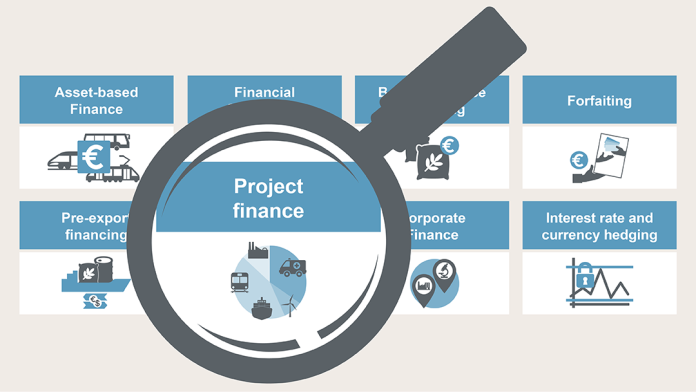SPSS software


What is meant by SPSS Software?
SPSS, which stands for “Statistical Package for the Social Sciences,” is a software program used for statistical analysis and data management. It was originally developed by IBM, but the software has gone through various versions and iterations over the years. SPSS is widely used by researchers, statisticians, social scientists, and other professionals to perform a wide range of data analysis tasks, including:
- Descriptive Statistics: SPSS allows users to calculate and display basic descriptive statistics such as mean, median, mode, standard deviation, and variance for a dataset.
- Inferential Statistics: It supports a variety of inferential statistical tests, including t-tests, analysis of variance (ANOVA), chi-square tests, regression analysis, and more. These tests help researchers make inferences about populations based on sample data.
- Data Visualization: SPSS provides tools for creating various types of graphs and charts to visually represent data, such as bar charts, histograms, scatterplots, and more.
- Data Cleaning and Transformation: Users can manipulate and transform datasets, including recoding variables, computing new variables, and handling missing data.
- Data Management: SPSS offers data management capabilities for organizing and handling datasets, including data import/export, merging datasets, and data filtering.
- Reporting: It allows users to generate reports with tables, charts, and analysis results, making it easier to communicate findings.
- Survey Data Analysis: SPSS has features for analyzing survey data, including survey design, data entry, and reporting.
- Predictive Analytics: Users can build predictive models, such as linear regression or logistic regression models, to make predictions based on historical data.
- Decision Tree Analysis: SPSS can be used to create decision trees for classification and predictive modeling.
- Text Analytics: Some versions of SPSS offer text analysis capabilities to analyze unstructured text data.
SPSS is a popular tool in fields such as psychology, sociology, economics, and healthcare, where researchers often need to analyze data to draw conclusions and make informed decisions. It provides a user-friendly interface for conducting statistical analyses, making it accessible to individuals with varying levels of statistical expertise.
Importance of SPSS Software?
- Data Management: SPSS allows users to efficiently manage and organize large datasets. It offers data entry tools, data cleaning capabilities, and the ability to import data from various sources, making it easier to work with complex datasets.
- Statistical Analysis: SPSS provides a wide range of statistical procedures and techniques for analyzing data. Users can conduct descriptive statistics, inferential statistics (such as t-tests, ANOVA, regression analysis, and chi-square tests), factor analysis, and more. These analyses help researchers uncover patterns, relationships, and insights within their data.
- Data Visualization: The software offers powerful data visualization tools, including charts, graphs, and tables, to help users present their findings effectively. Visual representations make it easier to communicate complex data to both technical and non-technical audiences.
- Reporting and Presentation: SPSS facilitates the creation of comprehensive reports and presentations, allowing users to generate customized reports with tables, charts, and statistical results. This feature is valuable for academic research, business analysis, and decision-making processes.
- Survey Research: SPSS is commonly used for survey design, data collection, and analysis. It supports questionnaire creation, data validation, and statistical analysis of survey responses, making it a valuable tool for researchers and organizations conducting surveys.
- Predictive Analytics: The software enables predictive modeling and data mining, making it useful for businesses and organizations looking to forecast future trends, customer behavior, and outcomes based on historical data.
- Cross-Tabulation and Data Exploration: SPSS allows for in-depth exploration of data relationships through cross-tabulation and pivot tables. Researchers can examine how variables interact and identify trends and patterns in the data.
- Data Export and Integration: SPSS can export data to other software tools for further analysis or integration with other systems. This flexibility makes it compatible with various data ecosystems.
- Research and Academia: SPSS is widely used in academic research across disciplines, allowing researchers to conduct rigorous statistical analysis for dissertations, theses, and academic publications.
- Business Decision-Making: In the business world, SPSS is used for market research, customer segmentation, risk analysis, and business intelligence. It aids in data-driven decision-making, helping organizations make informed choices based on data insights.
Overall, SPSS is important because it empowers researchers, analysts, and organizations to make data-driven decisions, draw meaningful conclusions from data, and communicate their findings effectively, which is crucial in today’s data-driven world.
Tools Used in SPSS Software?
- Data Editor: The Data Editor is where you input and manipulate your data. You can enter data manually, import data from various file formats, and perform data transformations.
- Variable View: This view allows you to define the properties of your variables, including their names, types (e.g., numeric, string), labels, and measurement levels (nominal, ordinal, interval, or ratio).
- Syntax Editor: SPSS allows users to perform operations and analyses through syntax commands. The Syntax Editor is where you can write and run these syntax commands, which are useful for automating tasks and ensuring reproducibility.
- Data Transformation: SPSS provides tools for data cleaning and transformation, such as recoding variables, computing new variables, and aggregating data.
- Descriptive Statistics: You can generate various descriptive statistics for your data, including measures like mean, median, standard deviation, and frequency tables.
- Chart Builder: SPSS includes a Chart Builder that allows you to create various types of graphs and charts, including bar charts, histograms, scatterplots, and more.
- Hypothesis Testing: SPSS supports a wide range of statistical tests, including t-tests, chi-square tests, ANOVA, regression analysis, and non-parametric tests. These tools help you test hypotheses and make inferences from your data.
- Regression Analysis: SPSS offers multiple regression techniques, including linear regression, logistic regression, and survival analysis. You can build and assess models to understand relationships between variables.
- Data Mining and Machine Learning: SPSS also includes tools for predictive modeling and data mining, such as decision trees, neural networks, and clustering algorithms.
- Factor Analysis and Principal Component Analysis: These tools are used for dimensionality reduction and exploring underlying structures in data.
- Time Series Analysis: SPSS has capabilities for time series forecasting and analysis, making it suitable for data with temporal components.
- Custom Tables and Reporting: You can create custom tables and reports to present your findings and results in a clear and professional manner.
- Integration with Other Software: SPSS can import and export data in various formats, making it compatible with other statistical and data analysis software.
- Scripting and Automation: Advanced users can use scripting languages like Python or R to extend the functionality of SPSS through custom scripts.
- Data Visualization: You can create various types of charts and graphs to visualize your data and results within the SPSS environment.
These are some of the primary tools and features available in SPSS. The specific tools you use will depend on your research or analysis objectives and the nature of your data.
Where we can use this SPSS Software?
SPSS (Statistical Package for the Social Sciences) is a widely used software tool for statistical analysis and data management. It is primarily used in academic, research, and business settings for a variety of purposes. Here are some common areas where SPSS is used:
- Social Sciences Research: SPSS was originally developed for social science research, and it is still extensively used in fields such as psychology, sociology, political science, and anthropology to analyze survey data and conduct various statistical tests.
- Business and Market Research: Companies use SPSS to analyze customer data, conduct market research, and make data-driven decisions. It’s used for tasks such as customer segmentation, predictive analytics, and market forecasting.
- Healthcare and Medical Research: SPSS is used in healthcare and medical research for analyzing patient data, clinical trials, and epidemiological studies. Researchers use it to assess the effectiveness of treatments, study disease patterns, and conduct survival analysis.
- Education: Educational researchers and institutions use SPSS for data analysis related to student performance, educational assessments, and program evaluations.
- Government and Nonprofits: Government agencies and nonprofit organizations use SPSS for data analysis and reporting, especially in areas like public policy analysis and program evaluation.
- Quality Control and Manufacturing: SPSS can be used in manufacturing and quality control to monitor and improve product quality, identify defects, and optimize processes.
- Finance and Banking: Financial institutions use SPSS for risk assessment, fraud detection, credit scoring, and portfolio management.
- Human Resources: HR professionals use SPSS for workforce analytics, employee satisfaction surveys, and talent management.
- Environmental Science: Researchers in environmental science use SPSS to analyze data related to environmental impact assessments, pollution studies, and climate change research.
- Sports Analytics: SPSS is also used in sports analytics to analyze player performance, team strategies, and game outcomes.
SPSS provides a wide range of statistical and data analysis tools, making it a versatile software package for anyone dealing with data analysis and research across various domains. It is known for its user-friendly interface, which makes it accessible to individuals with varying levels of statistical expertise.




